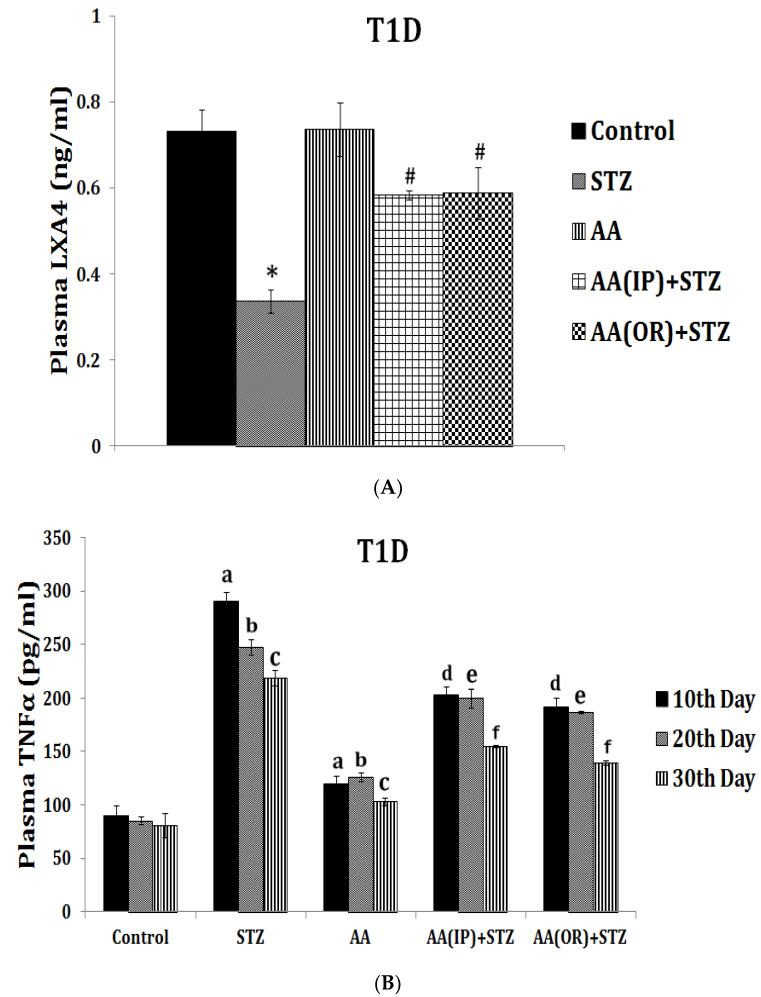Figure 6.
Effect of arachidonic acid (AA), the precursor of LXA4 and PGE2, on STZ-induced type 1 diabetes mellitus in Wistar rats. Both oral and intraperitoneal (i.p.) administrations of AA (10 μg/animal for 7 days) not only prevented STZ-induced type 1 diabetes mellitus and restored plasma glucose and insulin to normal but also enhanced plasma LXA4 levels to near control values (A) and suppressed TNF-α levels (B). These results suggest that AA is as potent as LXA4 in preventing diabetes and suppressing inflammation at least, in part, by enhancing LXA4 formation. Thus, AA is a potent anti-inflammatory molecule similar to LXA4. These data are taken from ref. [17]. Similar results were obtained with AA and LXA4 in a STZ-induced type 2 diabetes mellitus animal model (see reference [13]). (A) Measurement of LXA4 levels in plasma of AA ± STZ-treated animals at the end of the study (day 30). (B) Plasma TNF-α level in AA ± STZ treated rats. TNF-α measurement was done in plasma collected once every 10 days until the end of the study. All values are expressed as mean ± SEM. a p ≤ 0.05 compared to the 10th day of control. b p ≤ 0.05 compared to the 20th day of control. c p ≤ 0.05 compared to the 30th day of control. d p ≤ 0.05 compared to the 10th day of STZ control. e p ≤ 0.05 compared to the 20th day of STZ control. f p ≤ 0.05 compared to the 30th day of STZ control. * p ≤ 0.05 compared to untreated control. # p ≤ 0.05 compared to STZ control. All the above studies were done wherein each group consisted of n = 6 and all values are expressed as mean ± SEM.

